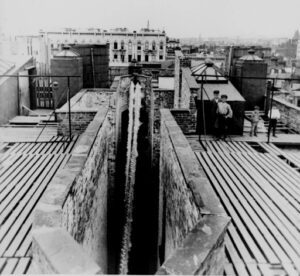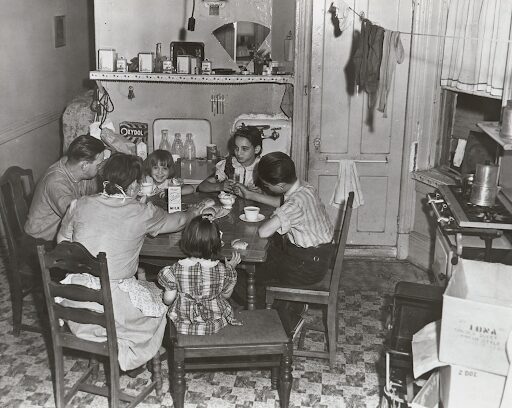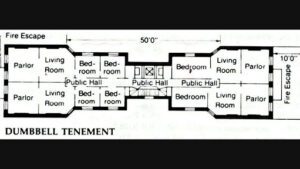There are few worse places to live than a small apartment without windows, ventilation, or natural light. Fortunately, today such an apartment would be borderline criminal here in NYC. That wasn’t always the case. However, in decades past, tenants were stacked into apartments with the only ventilation coming from windows that looked into rancid air shafts, filled with human waste, limited airflow, and a pungent odor.

The History Of The New York City Air Shaft:
In New York City, windows were not required in every room until the mid-19th century. When the new law was passed, most developers found ways to meet the regulations without fixing the ventilation and lighting issues that were common. Developers’ first solution was to install an interior window between two rooms, meeting the requirement with only one window!
To address this issue, city officials made exterior windows mandatory in the late 1880s. Of course, developers had to comply with the new regulations, but it was their main goal to use as much building space as possible. To do this, they built air shafts through the building, so the windows were facing the “exterior” of the building. Often, these air shafts were narrow enough that people could shake hands with neighbors in other buildings or even reach across into other apartments.
The problem was, no one was shaking hands or even opening these windows. In the space of a few years, they had become home to waste, disease, and a terrible stench. To many, the new air shafts were far worse than apartments without windows!
This passage found in A Tree Grows in Brooklyn, Betty’s Smith’s story of a young girl growing up in the middle of a Williamsburg slum (based on her own childhood), illustrates the issue perfectly:
The airshaft was a horrible invention. Even with the windows tightly sealed, it served as a sounding box, and you could hear everybody’s business. Rats scurried around the bottom. There was always the danger of fire. A match absently tossed into the airshaft by a drunken teamster set the house afire in a moment.
There were vile things cluttering up the bottom. Since the bottoms couldn’t be reached by man (the windows being too small to admit the passage of a body), it served as a fearful repository for things that people wanted to put out of their lives. Rusted razor blades and bloody clothes were the most innocent items.
To give you a picture of the problem, indoor plumbing was not common in those days, especially in tenement housing. So the easiest solution for disposal of human waste, food scraps, and more was directly into the air shaft. As a result, the garbage compiled at astonishing rates at the bottom.

In fact, in 1855 an Irish immigrant named Mary Olsen attempted to jump to her death in her tenement’s air shaft, but the large amount of garbage at the bottom was enough to cushion her fall, resulting in minor injuries.
In 1901, the city introduced stricter requirements on developers, which were called the “New Law” by dismayed landlords. This was in large part to the work of Jacob Riis and a few other “muckrakers” who had made it their mission to expose the abysmal living conditions in NYC tenements.
After the New Law, developers settled on the DumbBell building that included larger air shafts and was shaped like a dumbbell you might find in the gym.

The End of the Air Shaft:
With little being done to address the putrid odors and chronic lack of ventilation, many tenants had had enough. In 1900, hundreds testified before the Tenement House Committee, all objecting to the smell, air quality, and idea behind them. Reports note that there was not a single positive remark about air shafts during any of the committee meetings.
Importantly, the tenants were not alone. The FDNY had had enough of the air vents as well. While the air vents did little to provide fresh air for tenants, they were perfect for fueling fires, allowing them to spread rapidly throughout tenement buildings.
As a result of this uproar, the city introduced new regulations that created larger interior courtyards and stating that developers could only build on less than 70 percent of a lot.
Air Shafts Today: A Fight For Preservation.

Even with the air shaft’s abysmal history, there are some people who want to save the few older building that still have the pre-1900 airshafts. They argue that given the important historical significance, a few air shafts should be preserved. For example, a couple living at 1664 Third Avenue fought to keep their access to an airshaft which let in light and air to their rental unit in the Upper East Side. In 2021, there are still a few air shafts present in the city, but it’s unclear whether or not they will remain in action.
Luke Button is a writer, marketer, and content creator. He is passionate about tech, brand building, self-improvement, and the future of work. Luke’s work has reached #1 on Hacker News multiple times, been read aloud in the House of Commons, and is featured in Business Insider and Entrepreneur.


